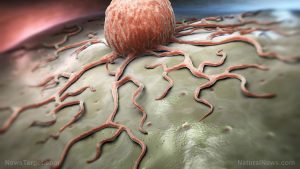
Free-living amebic infection – causes, side effects and treatments at NaturalPedia.com
Wednesday, April 04, 2018 by Michelle Simmons
http://www.naturalpedia.com/free-living-amebic-infection-causes-side-effects-and-treatments-at-naturalpedia-com.html

Free-living amebic infection depends on what genera of free-living amoeba caused it. It may be due to four genera of free-living amoeba that have been causally associated with disease in humans. These include Acanthamoeba spp., Balamuthia mandrillaris, Naegleria fowleri, and Sappinia pedata.

Known side effects of free-living amebic infection
The side effects of free-living amebic infection depend on the type of free-living amoeba that caused the infection. According to the Centers of Disease Control and Prevention (CDC), Acanthamoeba spp. and Balamuthia mandrillaris are opportunistic free-living ameba that can cause granulomatous amebic encephalitis (GAE) in people with weak immune systems. On the other hand, Naegleria fowleri causes an acute, and usually deadly, central nervous system disease called primary amebic meningoencephalitis (PAM). PAM may cause side effects, such as headache, fever, stiff neck, lethargy, and coma. Lastly, Sappinia pedata has been involved in a case of amebic encephalitis.
Body systems harmed by free-living amebic infection
The body systems harmed by free-living amebic infection may include the immune system, central nervous system, respiratory system, integumentary system, and the respiratory system.
List of foods or nutrients that prevent free-living amebic infection
There is no information on what certain foods or nutrients can prevent free-living amebic infection. However, there are some foods that can help get rid of fungal infections and parasites in the body, according to an entry published on the website LiveStrong.com. These include garlic, cruciferous vegetables such as broccoli, cabbage, cauliflower, Brussels sprouts, collard greens, and kale, onions, pumpkin seeds, and spices such as figs, cinnamon, cloves, and rhubarb. Other foods that can help treat parasite infections include cucumber seeds, papaya, clove, turmeric, ginger, cayenne, and the green hulls of black walnut.
Treatments, management plans for free-living amebic infection
Treatments for free-living amebic infection include drug medications, and early diagnosis is essential for effective treatment, according to CDC.
Where to learn more
- Brain-eating amoeba are proven vulnerable to extracts of an extraordinary, yet common Midwest American Indian plant
- Post-flooding fear in Texas and Florida as risk of contracting DEADLY rare brain-eating bacteria rises dramatically
- 10 Deadly organisms that live in your body
- BigPharmaNews.com
- Herbs.news
Summary
Free-living amebic infection is an infection caused by one of the four genera of free-living ameba that have been causally associated with disease in humans.
Acanthamoeba spp. and Balamuthia mandrillaris can cause granulomatous amebic encephalitis (GAE) in people with weak immune systems.
Naegleria fowleri causes primary amebic meningoencephalitis (PAM), an acute, and usually deadly, central nervous system disease, which may be accompanied with headache, fever, stiff neck, lethargy, and coma.
Sappinia pedata has been involved in a case of amebic encephalitis.
Free-living amebic infection may harm the immune, central nervous, respiratory, integumentary, and respiratory systems.
Sources include:
Tagged Under: Tags: Free-living amebic infection





